Strategies for cost reduction must always be considered about store policies and procedures and aligned with broader corporate objectives.
At the store level, cost control needs to reflect the bigger picture and be justifiable given the organisational direction. Considerations such as operating procedures, financial and resource management, reporting protocols, and service standards need to be taken into account when evaluating potential cost reduction measures.
Five critical areas for potential quick wins in cost reduction include:
- Control operating expenses
- Control cash
- Control shrinkage
- Control stock
- Control payroll
Control operating expenses
Operating expenses generally fall into two categories, those that cannot be changed in the short term and those that can. Costs such as rent, interest rates, franchise fees, taxes, award pay rates, and marketing levies are unlikely to be lowered in the short term due to agreements, contracts, or legislation that define them.
Far better to expend energies on the expenses that can be changed in the short term such as utilities, freight, salaries and wages, phone and data, travel, print postage and stationery, and balancing errors.
How best to go about controlling these costs is open to opinion. Alignment with business policies, procedures, and objectives are a given, beyond that the options are varied and depend only upon the level of savings anticipated and the focus and goodwill of staff responsible for implementing them.
Options include:
- Using systems and technology – e.g., limiting phone calls by restricting dial-out access on some phones to local calls only
- Motivate the team to do the right thing – e.g., reducing power usage by encouraging staff to turn off lights and appliances when these are not in use
- Change the way you do things – e.g., recycling or re-using materials
- Good supervision – e.g., to ensure staff remain fully productive throughout the day
- Good management – e.g., spending time and energy to develop the best roster, employ the right mix of staff (casuals vs. full time vs. part-time) and utilise match to traffic
The level of success of initiatives such as those listed above relies upon the involvement and commitment of store teams. How comprehensively they support and get behind the strategies is a clear indicator of success. This is not as impossible as it sounds when initiatives are reinforced by a strong link to business culture.
Control cash
Cash control in a retail context involves a variety of tasks.
- Register
- Cash float
- Processing a sale
- Start and end of day procedures
- Register balancing and discrepancies
- End of month procedures
- Methods of payment – EFT and credit card payments
Control shrinkage
Unknown shrinkage can be a severe threat to the profitability of a retail business. One of the most insidious forms of shrinkage is internal or employee theft.
Many factors contribute to a high level of employee theft, poor recruitment protocols, inadequate supervision, poor staff morale, and a failure to implement basic financial controls can all contribute to an environment ripe for internal theft.
The following pointers can help retailers minimise the risk of internal theft and create an environment that is unattractive to the opportunist thief:
- Create a positive work environment
- Encouraging staff to act in the best interests of the business through fair employment practices, clear job descriptions and policies and procedures, transparency and trust in management communications, and employee recognition programs all help reduce the likelihood of internal theft
- Safeguard assets through the separation of duties and limiting access to physical and financial assets and information
- Ensuring all staff understand the policies and procedures related to fraud, the internal controls in place to detect fraud and the protocols if fraud is detected can reduce the likelihood of attempts at internal theft Attention and prevention
- Perform regular and irregular audits to identify new vulnerabilities and measure the effectiveness of existing controls
- The more management know and understand about the causes and signs of employee theft the more likely it can be minimised or detected early
Control stock
It is common in the retail world for merchandise to account for well over half of all business costs. Whether the value is in individual items, or the volume of merchandise held for sale, accurate records of stock are an essential part of the information required to make sound financial business decisions.
Control payroll
Surprisingly this is an area that many retailers forget to address when investigating ways in which to control costs better. As salaries and wages are a high component of overall operating expenses, it is to control costs better that every effort is made to ensure the accuracy of payments to staff, mainly where a high percentage of part-time and casual staff are employed as this increases the likelihood of errors.
Additional benefits of ensuring the accuracy of wages and salaries are the knowledge that staff is not being underpaid, and the confidence of complying with relevant payroll, workplace health and safety, superannuation, and leave legislation.
Smaller retailers may use a manual process to confirm when people begin and end their work for the day; larger retailers may use advanced software such as those employing fingerprint technology to record clock on and off times and breaks that are integrated into fully automated payroll systems.
For retailers considering making the investment into fully automated payroll systems, the benefits they can expect include:
- An increase in timesheet accuracy
- Improved management of the rostering process
- A reduction in timesheet processing errors through automation
- The ability to break down labour costs
- The provision of customer reports measuring daily productivity
- The effective management of EBA and Award issues (EBA – enterprise bargaining agreements)
- A shift in the responsibility for productivity control from payroll to store managers
- Improved ability to cost individual process and justify the capital expenditure
Want to learn more about cost reduction strategies and financial control? The ARA Retail Institute runs multiple workshops on this topic and much more. Click ‘training workshops’ below to find out more.
{{cta(‘7e82b0b3-ef0c-4151-8e7c-7a9d592d6e31′,’justifycenter’)}}
About ARA Retail Institute
ARA Retail Institute is Australia’s leading retail training provider for both accredited and non-accredited learning programs. For more information, please visit: www.retailinstitute.org.au




















